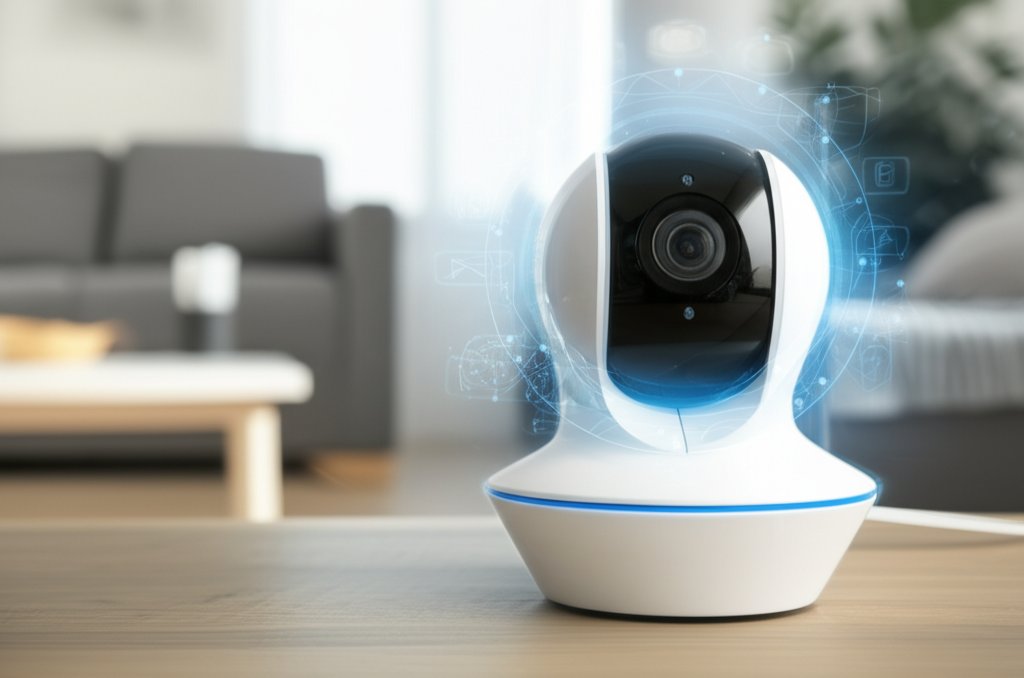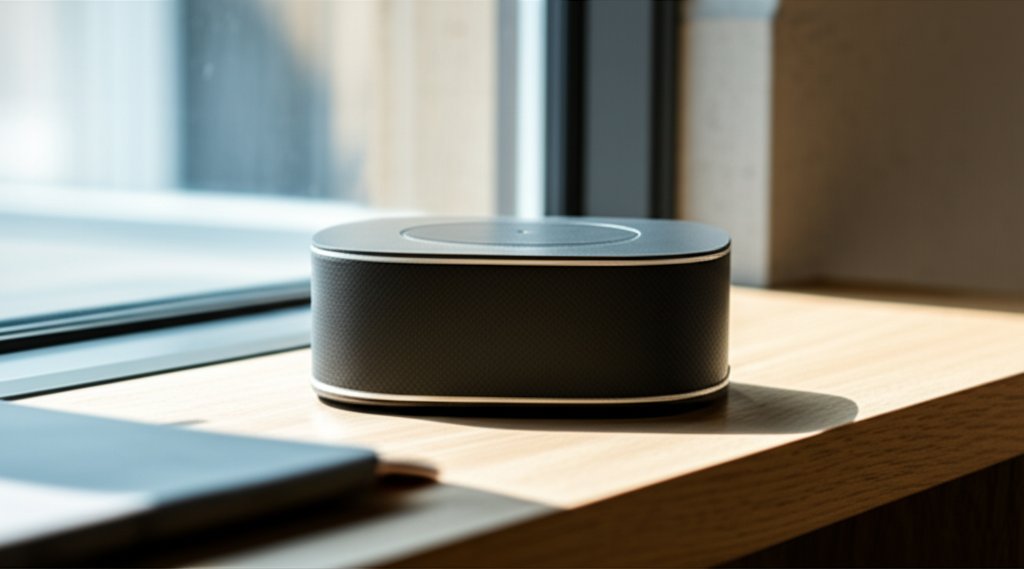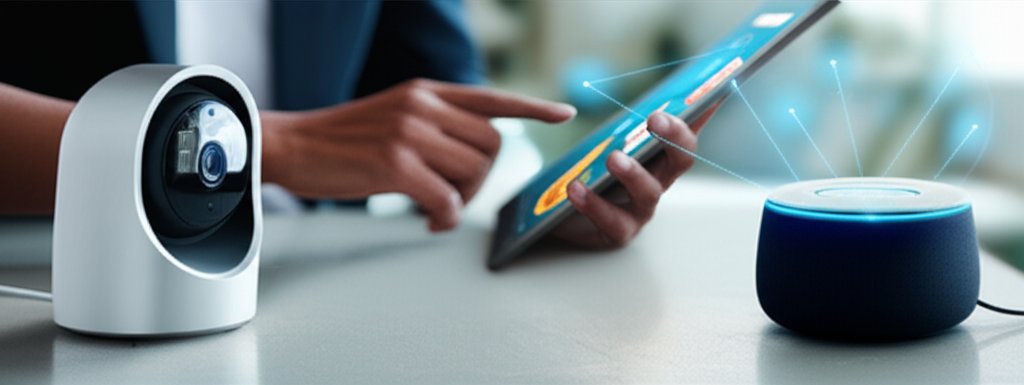7 Simple Ways to Shield Your Smart Home from Creepy IoT Insecurity
Ah, the smart home. It’s truly amazing, isn’t it? We love the convenience – a thermostat that learns our habits, lights that respond to our voice, doorbells that show us who’s at the door even when we’re miles away. These Internet of Things (IoT) devices promise to make our lives easier, more comfortable, and more automated. But what happens when that convenience crosses into something a little… creepy? What if those devices, designed to protect and serve us, become open doors for vulnerabilities, privacy breaches, or even outright device hijacking?
You see, while the “smart” in smart home is all about connectivity, that very connectivity can be a double-edged sword. From data theft and unauthorized access to cameras that can spy and devices that can be held for ransomware, the potential for misuse is real. We’re talking about more than just a minor inconvenience; we’re talking about the integrity of your personal space and data. Adopting a mindset of continuous verification for all access, a core tenet of Zero Trust, is crucial for modern security. That’s why understanding how to secure your smart home isn’t about being a tech wizard; it’s about adopting smart, proactive habits. Everyday internet users and even small businesses are actively seeking practical, actionable advice to protect their smart home devices and networks from these cyber threats. We want to empower you, not alarm you, to take control.
The good news? Keeping your smart abode secure doesn’t require a cybersecurity degree. It just takes a few thoughtful steps. Let’s explore 7 simple ways you can strengthen your smart home’s defenses and enjoy the benefits without the creepiness. Each of these recommendations focuses on practical, non-technical actions you can implement today to greatly improve your IoT security and secure your digital sanctuary. They’re chosen because they address common vulnerabilities with straightforward solutions, impacting a broad range of smart devices and user types, making them essential for a truly secure connected life.
1. Fortify Your Wi-Fi Network – Your Smart Home’s First Line of Defense
Your Wi-Fi network is the gateway to your smart home. Every single IoT device connects through it, making its security absolutely paramount. Think of it as the main entrance to your physical house; if that’s not locked down, everything inside is at risk. We can’t stress this enough: a strong, well-configured Wi-Fi setup is the bedrock of smart home security, and crucial for fortifying remote work security for your home network.
- Change Default Router Credentials Immediately: When you get a new router, it comes with a generic username and password (e.g., “admin” / “password” or “guest” / “guest”). Hackers know these defaults by heart and regularly scan for them. Leaving these unchanged is like leaving your front door wide open with a “Welcome, Intruders!” sign. You must change them immediately to something strong and unique. We’re talking about the credentials to log into your router’s administration settings, not just your Wi-Fi password. This is typically done by typing your router’s IP address (often 192.168.1.1 or 192.168.0.1) into a web browser.
- Use Strong Encryption (WPA2/WPA3): Your Wi-Fi encryption scrambles the data travelling between your devices and your router, making it unreadable to anyone without the key. WPA2 is currently good, but WPA3 is even better and more robust. You should check your router’s settings (usually in the “Wireless Security” or “Wi-Fi Settings” section) to ensure you’re using at least WPA2-Personal (or WPA2-PSK) with AES encryption. If your router supports WPA3, enable it! It’s a generally simple setting change that significantly elevates your network’s defenses.
- Create a Separate Guest Network for IoT Devices: This is a brilliant and often overlooked tip. Most modern routers allow you to create a “guest” Wi-Fi network that’s separate from your main network. Use this guest network only for your smart home devices (smart TVs, light bulbs, thermostats, cameras, etc.). Why? Because if a smart device on the guest network gets compromised, it will be isolated and won’t have direct access to your sensitive computers, phones, or personal files on your main, trusted network. This network segmentation significantly limits potential damage and is a cornerstone of robust IoT security. For example, if a vulnerability were exploited in your smart coffee maker, it wouldn’t be able to access your laptop’s documents.
2. Banish Default Passwords & Embrace Uniqueness
This one sounds obvious, but it’s astonishing how many people skip this critical step for their smart devices. Just like your router, many new smart devices come with easy-to-guess default passwords. These are designed for ease of setup, not security.
- Why Default Passwords are an Open Door: The problem with default passwords is that they’re often publicly known, printed on the device itself, or easily found with a quick online search. Imagine a hacker wanting to gain access to your smart camera. They don’t need fancy tools; they just try “admin” and “12345” or “password.” If you haven’t changed it, they’re in. This isn’t theoretical; we’ve seen countless cases where this simple oversight leads to unwanted intrusions, from someone speaking through your smart baby monitor to unauthorized access to your doorbell camera.
- Craft Strong, Unique Passwords for Every Device: You need to create complex, unique passwords for every single smart device that allows it. That means a mix of uppercase and lowercase letters, numbers, and symbols, and ideally at least 12-16 characters long. And please, please, don’t reuse passwords! If one device’s password is breached, a unique password ensures other devices aren’t immediately compromised. For instance, if your smart speaker’s password is leaked, a unique password means your smart lock remains safe.
- Consider a Password Manager: Managing dozens of unique, strong passwords for all your smart devices and online accounts can feel overwhelming. That’s where a password manager becomes your best friend. Tools like LastPass, 1Password, or Bitwarden securely store all your complex passwords behind a single, master password. They can even generate strong passwords for you and fill them in automatically. It’s an indispensable tool for maintaining excellent cybersecurity hygiene without the headache of memorization.
3. Enable Two-Factor Authentication (2FA) Everywhere Possible
Two-Factor Authentication (2FA), sometimes called multi-factor authentication (MFA), adds a crucial extra layer of security beyond just a password. It’s like having an extra, mandatory lock on your digital door, requiring not just something you know (your password) but also something you have (like your phone) or something you are (like a fingerprint).
- The Extra Lock on Your Digital Door: Even if a hacker somehow manages to guess or steal your password, 2FA prevents them from gaining access because they won’t have the second factor. Typically, this second factor is a code sent to your smartphone via SMS, a push notification to an authenticator app (like Google Authenticator or Authy), or a physical security key. Without that second piece of information, their unauthorized entry attempt fails. It dramatically reduces the risk of account takeover. For an even more advanced approach to identity verification and preventing identity theft, consider exploring passwordless authentication, especially relevant for hybrid work environments. Imagine a thief having your house key; with 2FA, they still need to pick up a specific package from your porch (the second factor) to get in.
- How to Set It Up: Many smart home device manufacturers and platform providers (like Google Home, Amazon Alexa, Apple HomeKit) offer 2FA for your main accounts. You’ll usually find the option in the “account,” “security,” or “privacy” settings within the device’s companion app or on the manufacturer’s website. Look for phrases like “Two-Factor Authentication,” “Multi-Factor Authentication,” or “Login Verification.” Enable it for every smart home service and device that supports it. It might take an extra few seconds to log in, but that peace of mind is absolutely worth it.
4. Keep Everything Updated – Patches are Your Protection
Software and firmware updates might seem like an annoyance, but they are absolutely essential for maintaining robust smart home security. Ignoring updates is akin to ignoring a leaky roof – eventually, the small problem will lead to bigger, more damaging issues.
- The Importance of Firmware and Software Updates: Cybercriminals are constantly looking for new vulnerabilities, or “holes,” in device software. When a manufacturer discovers one of these security flaws, they release a “patch” in the form of a firmware or software update. These updates not only fix those vulnerabilities, closing potential entry points for hackers, but they also often introduce new security features and improve overall device performance. Devices that aren’t updated remain vulnerable to known exploits, making them easy targets. This is especially true for zero-day vulnerabilities that can emerge unexpectedly. For example, a recent update might fix a flaw that allowed hackers to remotely control certain smart light bulbs; if you don’t update, your bulbs remain an easy target.
- Automate When You Can, Check Manually When You Can’t: Many smart devices and their associated apps offer options for automatic updates. If this feature is available, enable it! It’s the easiest way to ensure your devices are always running the most secure version of their software. For devices that don’t offer automatic updates (e.g., some older smart plugs or less common devices), make it a habit to check for new firmware versions regularly. You can usually do this through the device’s companion app, the manufacturer’s website, or directly through the device’s settings menu. A quick monthly check across your devices is a small effort for significant security gains.
5. Be Picky About Your Devices & Their Settings
In the world of smart homes, not all devices are created equal. Just because a device is “smart” doesn’t mean it’s smart about security. Being discerning before you buy and meticulous about settings afterward can make a huge difference.
- Research Before You Buy: Before bringing any new smart device into your home, do your homework. Prioritize reputable brands with a strong track record for security and privacy. Look for reviews that mention security features, update frequency, and customer support. Does the manufacturer actively address security flaws? Do they have a clear, easy-to-understand privacy policy? A cheap, no-name smart camera might save you a few dollars, but it could cost you your privacy and peace of mind in the long run if it has unpatched vulnerabilities or transmits data insecurely. We recommend choosing well-established brands that prioritize their customers’ safety.
- Disable Unnecessary Features & Permissions: Many smart devices come loaded with features you might never use. Things like remote access capabilities, always-on microphones, or camera functions you don’t need can become unnecessary entry points for attackers. Go through the device’s settings (usually in its companion app) and disable anything you don’t actively use. For instance, if your smart thermostat has a built-in microphone for voice commands you never use, turn it off. Similarly, review the permissions requested by smart device apps during installation or in your phone’s app settings. Does a smart lightbulb app really need access to your location or contacts? Limit access to only what’s absolutely essential for the device to function.
- Review Privacy Settings: Your smart devices collect a lot of data about you – your habits, your voice commands, even your presence. It’s crucial to regularly review and adjust the privacy settings within your device apps and associated platform accounts (e.g., Alexa, Google Home). Understand what data is being collected, how it’s being used, and with whom it’s being shared. Opt out of data collection and sharing whenever possible, especially for “improving services” or “personalized ads,” unless you are completely comfortable with it. You’re in control of your data, so exercise that right!
6. Use a VPN for Remote Access & Public Wi-Fi
You’re out and about, maybe at a coffee shop or the airport, and you want to check your smart home’s status or adjust your thermostat. While convenient, accessing your smart home controls over public Wi-Fi without proper protection is a significant risk.
- Why Public Wi-Fi is Risky: Public Wi-Fi networks are often unsecured, making them a playground for cyber snoops. Anyone on the same network can potentially “listen in” on your activity, trying to intercept your login credentials or data as you connect to your smart home apps. This is a common attack vector that’s surprisingly effective because people assume public Wi-Fi is safe. It’s not. It’s an open door for bad actors to try and grab your sensitive information. Imagine having a conversation in a public park versus a private, soundproof room; public Wi-Fi is the park.
- How a VPN Protects You: A Virtual Private Network (VPN) encrypts your internet connection, creating a secure, private tunnel between your device and the internet. When you use a VPN on public Wi-Fi, all your data, including your smart home app communications, is scrambled and unreadable to anyone trying to intercept it. This makes it incredibly difficult for snoopers to gain access to your information or discover your credentials. If you routinely access your smart home systems while away from home, a reputable VPN is a non-negotiable security tool for your phone, tablet, and other mobile devices.
7. Monitor & Manage Your Smart Home Ecosystem
Securing your smart home isn’t a one-time setup; it’s an ongoing process. Just like you’d keep an eye on your physical home, you need to regularly check on your digital one. Vigilance is a powerful security measure.
- Inventory Your Devices: Do you know every single smart device connected to your network? Many people don’t! Take the time to create a simple inventory of all your smart light bulbs, plugs, cameras, thermostats, voice assistants, and other IoT gadgets. Knowing what’s connected helps you identify potential rogue devices and ensures you’re keeping everything updated and secured. You can usually see a list of connected devices in your router’s administration interface or sometimes within your smart home hub’s app. This simple act can reveal forgotten devices or even unknown connections.
- Regularly Check for Unknown Devices: Periodically review the list of devices connected to your Wi-Fi network. Most routers have a “connected devices” or “device list” section in their admin interface. Look for anything unfamiliar – a device with a strange name or an unknown MAC address. If you spot an unknown device, investigate it immediately. It could be an unauthorized connection, indicating a breach of your Wi-Fi password, or even a neighbor freeloading. Some security apps for your network can also help monitor for unusual activity or new devices appearing on your network.
- Securely Dispose of Old Devices: When it’s time to upgrade or get rid of an old smart device, don’t just toss it in the bin! Many smart devices store personal data, network credentials, and user settings internally. Always perform a factory reset to wipe all personal data from the device before selling, donating, or recycling it. Consult the manufacturer’s instructions for the specific factory reset procedure, as it varies by device. Failing to do so could leave your personal information and even your home network credentials accessible to the next owner, posing a significant privacy and security risk. For example, an old smart camera might still have your Wi-Fi password embedded, making it easy for the new owner to gain access to your home network.
Enjoy Your Smart Home, Securely
It’s easy to feel overwhelmed by the sheer volume of cyber threats out there, but we hope this guide has shown you that securing your smart home is entirely within your control. These 7 steps are practical, actionable, and don’t require you to be a cybersecurity expert. You don’t need a technical degree to implement strong passwords, enable 2FA, or simply keep your devices updated.
By taking a proactive approach and applying these simple habits, you’re not just protecting your smart devices; you’re safeguarding your privacy, your data, and your peace of mind. This holistic approach also extends to critical areas like avoiding common email security mistakes that can compromise your broader digital life. Remember, security is an ongoing journey, not a destination. It requires continuous, small efforts rather than a one-time fix. So, why not start small and expand your security efforts today? Enjoy the immense convenience your smart home offers, knowing you’ve taken the necessary steps to keep it secure and free from anything creepy.
Join our smart home community for more tips and troubleshooting, and let’s build a safer, smarter future together!






